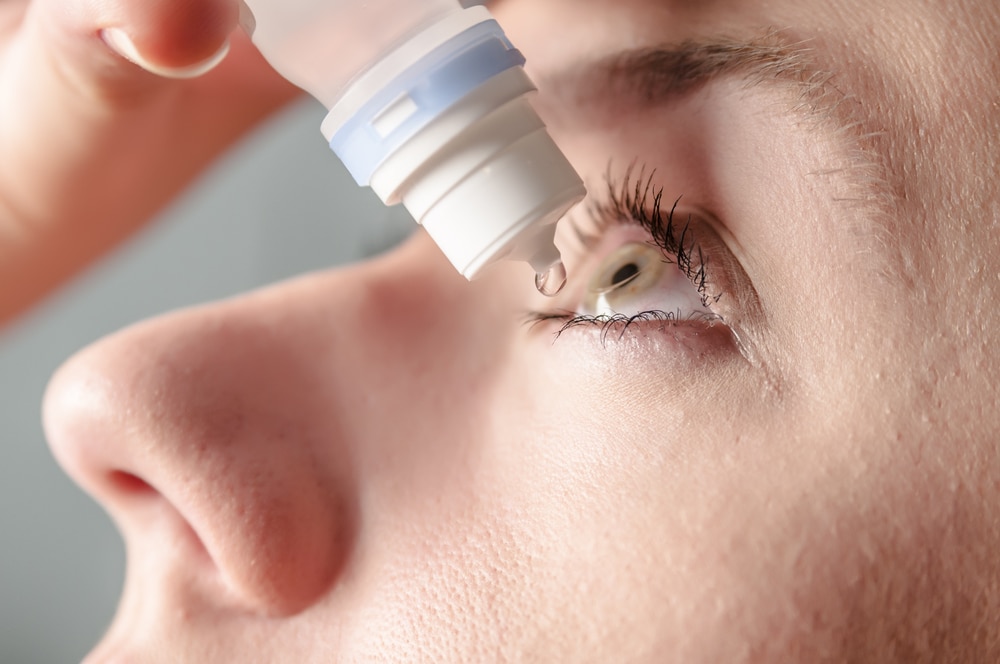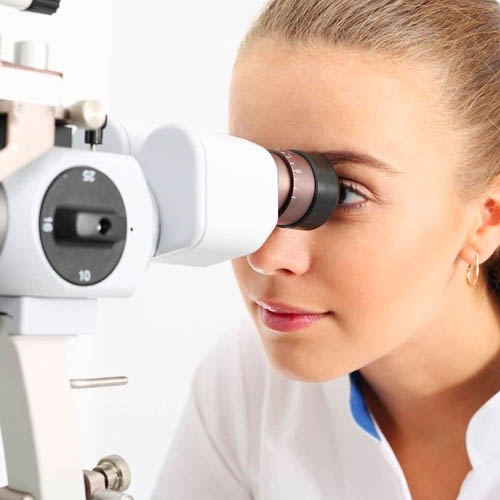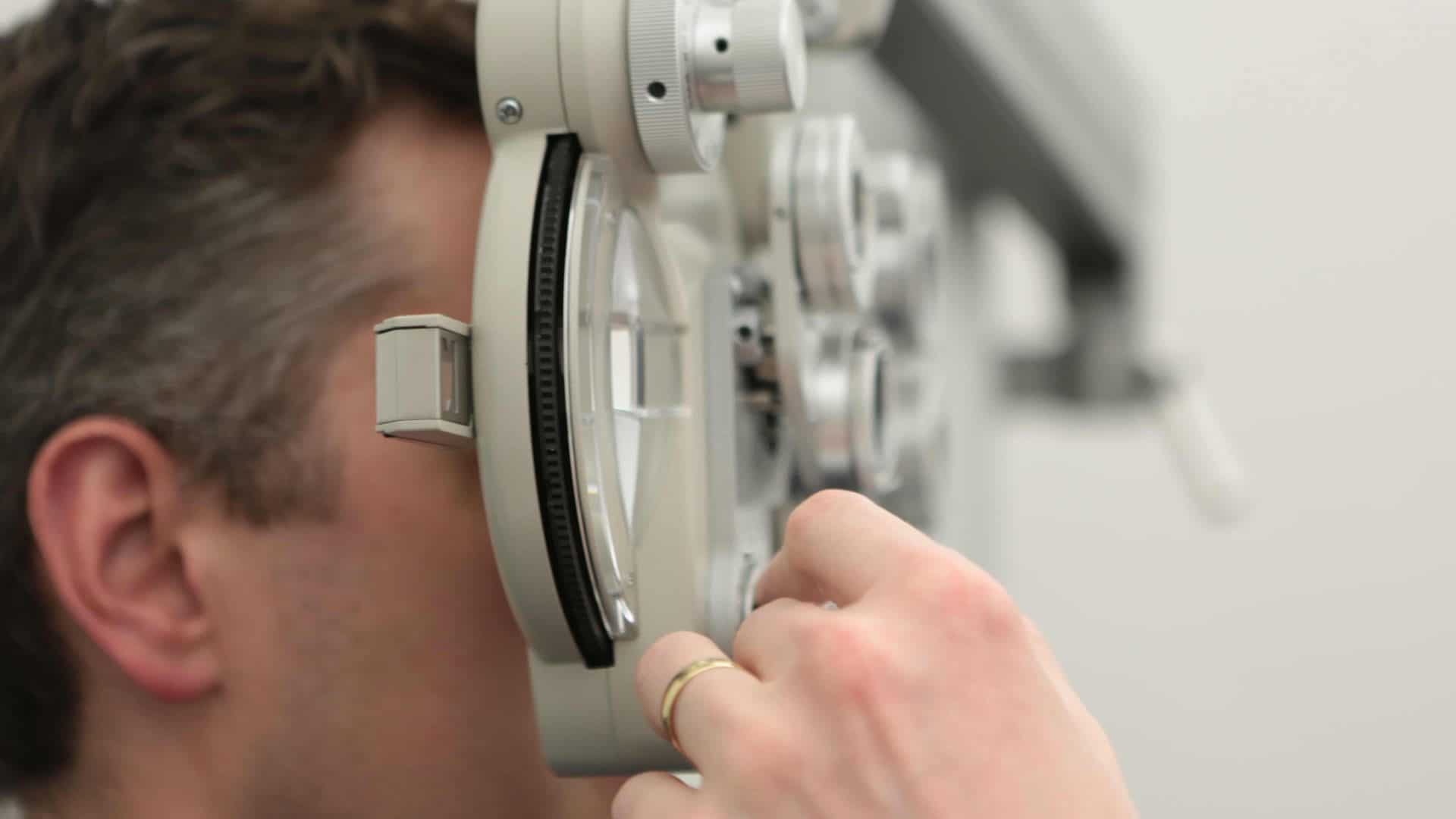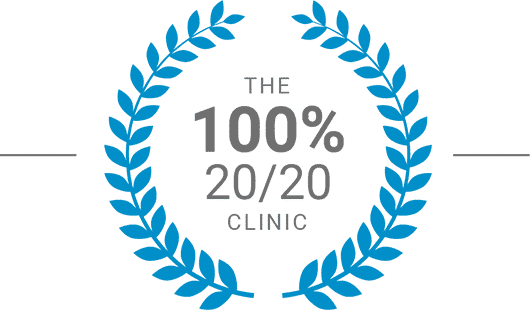Book Your Free Consultation
Mr David Allamby
MD, FRCOphth, FRCS
Myopia, commonly referred to as near-sightedness or short-sightedness, is a condition that hinders the effective range of vision, with objects only appearing clear and in focus when nearby. Myopia is a widespread cause of poor eyesight, with an estimated 1 in 3 people in the UK having myopia.
Most often myopia develops at a young age, in children between 8 and 12 years old, but will become significantly worse during puberty as the body experiences a rapid period of growth. While myopia can occur in adulthood, there is little change to the size and shape of the eye from the age of 20 onwards, reducing the likelihood of development.
Myopia occurs when the eyeball lengthens, or the cornea (the clear, dome-shaped front surface of the eye) becomes too curved. This causes light that enters the eye to focus in front of the retina (the back of the eye) rather than directly on it. As a result, distant objects appear blurry, making myopia a refractive error.
Several factors can contribute to developing myopia, with both genetic and environmental factors. Studies have shown that children who spend more time reading, using electronic devices or doing close-up work are more likely to develop symptoms of myopia. Additionally, children whose parents are myopic (near-sighted) are more likely to be affected.
The severity of myopia can differ from person to person, with some people only needing glasses for certain activities, such as driving or watching television. For others, myopia can significantly impact everyday life, making it difficult to read road signs, recognise faces or participate in sports.

Myopia is a condition inherited from your parents; chances are if you have myopia your children will have it too. Besides blurred vision at a distance there are several symptoms to be on the lookout for if you suspect you or your child has near-sightedness:
As a parent, it is essential to stay mindful of these symptoms; as your child’s education can begin to suffer as a result, if they are struggling to focus in school. It is worth noting that while we currently don’t understand why myopia happens, we do know that that focusing the eyes on nearby objects for extended periods of time will increase the risk of developing short-sightedness.
Monitoring time spent reading and writing, or, as is more prevalent these days, time spent with electronic devices, like phones and tablets, will help to reduce the risk of myopia. Research has even shown that children who spend more time playing outside are not only at a lower risk of developing myopia, but any existing myopia may progress at a slower rate.
Fortunately, if the problem is caught early enough, the condition is easily treatable with glasses or contact lenses. Depending on the degree of your child’s myopia, he or she may need to wear glasses or lenses permanently, or only when required.
Without diagnosis and treatment, children can suffer unnecessary eyestrain and headaches as a result. Affecting not only their day to day life but impeding on their education too.
For myopia (short-sightedness), a minus sign appears on your glasses or contact lens prescription. For instance, a prescription of -3.50 dioptres means you have three and a half dioptres of myopia, with the minus symbol denoting that the lens corrects short-sightedness. The larger the number, the greater the degree of myopia.
For most individuals with myopia under -6.00D, no additional complications develop. This is often referred to as simple myopia, where the eye remains healthy, and the blurriness caused by myopia can be easily corrected with glasses or contact lenses.
It is worth noting that while myopia is an eye-focusing disorder rather than an eye disease, it may be treated as such, depending on how severe your myopia is. It will be categorised as either simple myopia or high myopia.
Myopia will be classified as simple if a correction of fewer than six diopters is required. If a correction of six diopters or higher is needed (high myopia), it is then considered an eye disease because of the higher risk associated with developing other complications.
So What About Myopia and Other Complications?
Myopia is a refractive error within the eye, meaning that the eye is failing to focus light on the correct point within the back of the eye (retina), causing blurred vision. This is as a result of either, the eyeball becoming too long from front to back, the cornea being too curved for the eyes length, or if the lens is too thick.
At Focus, we recommend having regular eye examinations, since it may not always be clear to yourself if you are experiencing trouble with your vision; especially if the onset has been slow.
Myopia diagnosis will generally fall into three categories:
Pathological myopia develops before the age of 6 and is categorised as an extreme elongation of the eye that will not change.
If you are diagnosed with myopia between the ages of 6-18, your vision will be expected to stabilise by your late teens into early twenties. School-age myopia is more prevalent in industrialised countries and has a direct correlation with the amount of time spent reading.
If you develop myopia beyond the age of 20, this is known as adult onset myopia, most people diagnosed work in occupations requiring a large amount of near-vision activities.
If you do have high myopia (over -6.00D) it doesn’t mean your eyes aren’t healthy, what it does mean is that although your eyes are healthy; you are at higher risk of developing eye conditions because of changes associated with the lengthening of the eye, and stretching of the retina. High myopia can increase the risk of retinal detachment, early development of cataracts, and glaucoma.

Let’s see if Myopia can lead to other eye conditions and further complications
Even mild and moderate myopia has been associated with an increased chance of glaucoma. It refers to a group of related eye disorders that all cause damage to the optic nerve that carries information from the eye to the brain.
If untreated, glaucoma can eventually lead to blindness. If you have been diagnosed with glaucoma, then you may be prescribed eye drops to help control your eye pressure.
It’s crucial that you use your eye drops as advised, as this will reduce the possibility of developing any future sight loss due to glaucoma.
A detached retina is a serious and sight-threatening event, occurring when the retina becomes separated from its underlying supportive tissue. The retina cannot function when these layers are detached, and unless the retina is reattached soon, permanent loss of vision may result.
Research has found that eyes with more chronic, severe, cases of myopia have an increased risk of retinal detachment compared with non-myopic eyes. The symptoms include:
It is vital that if you display any of these symptoms, to get your eyes checked out immediately by an eye specialist. Fortunately, retinal detachment can be repaired with surgery. Your eye specialist will be able to assess the detachment and decide the best course of action.
It is good practice to schedule and attend regular eye examinations; this will allow you to keep an eye on any conditions that you may already have, or catch any that may develop during their early stages. To ensure that any treatment suggested by your eye specialist will be far more effective than trying to treat a condition that has been allowed to progress into maturity.

During one of these examinations, if your eye doctor suspects you may have myopia, they will use a number of tests designed to measure how light is focused by the eyes, using the results to identify the level of corrective lenses required.
It is most likely that first, you will take a visual acuity test; you will recognise this as a chart featuring a series of letters, ranging from large-scale font toward the top, getting progressively smaller towards the bottom. While placed within a set distance from the chart, you will be asked to read aloud the letters from top to bottom, whilst shielding one eye at a time.
Your optometrist will also want to test the refraction of your eyes; this is done using a piece of equipment known as a phoropter (a device used to place lenses of varying strengths in front of the eyes) in conjunction with a retinoscope. Doing this will allow your doctor to measure the ability of your eyes to focus light.
Generally, eye drops will not be required throughout this testing, although in some cases; such as when patients cannot verbally respond to communicate. Your eye doctor may decide to use drops intended to stop the eye from changing focus throughout testing.
With the results from these, and possibly further, tests. Your eye doctor can make a diagnosis of myopia, and determine the strength required for any corrective measures.

Once your optometrist has diagnosed you as myopic, it is time to consider options for treatment. Unfortunately, there is no way to stop myopia in its tracks, but you can treat the symptoms once they start to present themselves.
There are several surgical and non-surgical options available, and your doctor will discuss the pros and cons of each and make their recommendation on what they see as the best course of action to undertake.
For people with myopia there are several non-surgical treatments available to ease the symptoms of myopia, and improve distance vision:
The most common choice for people with myopia, down to the cost, coupled with the fact that not all people with myopia will be required to wear them at all times. Generally prescribed with a single-vision lens, multifocal lenses are available, providing clear vision over a range of distances.
Similar to eyeglasses, you will be prescribed the strength required to correct any myopia you may have. Unlike eyeglasses contact lenses are worn directly on the eye.
An advantage of this is that your field of view is wider in comparison to eyeglasses, but proper care must be undertaken to ensure continued eye-health.
Ortho-k is a treatment in which a series of solid contact lenses are worn in order. This allows for the cornea to be reshaped over a period of time, changing how the light refracted through the eye is focused.
Refractive surgery performed with a laser is becoming a more and more popular choice, not only because of the potential to remove the need for glasses/contacts. But advancements in technology yield fantastic results for patients.
Refractive surgery can only be performed once the refractive error in the eye has stabilised, this generally occurs throughout your 20’s. The two most common types of refractive surgery are:
LASIK stands for Laser-assisted in situ Keratomileusis, during this procedure a small ‘flap’ is cut into the cornea; once exposed, a laser is used to remove some tissue, reshaping the cornea.
The corneal flap is then placed back in position to allow for healing. The successof LASIK is only limited by how much material is available to be removed from the cornea.
PRK is similar to LASIK in that it uses a laser to remove material from the cornea to reshape it. Unlike LASIK however; there is no need for a surface flap to be created first.
PRK does require a slightly longer healing time when compared to LASIK, as cells on the surface of the cornea require time to replenish. Once again, PRK is only limited in its success by how much corneal tissue can be safely removed.
There are also surgical options available for patients who are extremely near-sighted, or whose corneas are too thin for laser-based procedures. These types of surgeries involve implanting a small lens, calibrated for the amount of optical correction required, into the eye.
The implant can replace the eyes natural lens (intraocular lens implantation), where the original lens found within the eye is removed first, similar to cataract surgery. Or the artificial lens can be placed over the natural lens (phakic intraocular lens implant).
Near-sightedness as a result of myopia can cause a myriad of issues throughout your day to day life, from headaches and eyestrain to limited vision becoming a safety concern while driving or using heavy machinery.
Therefore, it is imperative to choose the correct clinic when it comes to your eye health, and the decision to undergo any corrective treatment following diagnosis.
At Focus, we have over 45 years of combined experience in the industry, with our on-site surgeons having performed in excess of 35,000 procedures. Our specialists are some of the only optometrists in the UK working full time in laser-assisted refractive surgery.
Boasting a 100% success rate in laser eye surgery and holding the number 1 spot on Trustpilot for any eye treatment rated clinic. You can be assured you will receive the finest treatment when you choose Focus Clinic London.
To help you make an informed decision on whether to undergo any myopia treatment, we offer free consultations where our skilled surgeons will go over all available options with you. You can also get all your questions answered during this time in a no-obligation environment.
If you wish to book a free consultation or want more information on how to regain clear distance vision, please don't hesitate to contact our expert team today. We look forward to hearing from you!
Yes, in some cases, myopia can improve without any treatment. This is most likely to happen during childhood as the eye continues to grow. However, in most cases, myopia will gradually worsen over time and will require some form of treatment to correct.
No, myopia cannot be cured. However, various treatments available can help improve vision and, in some cases, stop myopia progression. The most common treatments are glasses, contact lenses, and refractive surgery. Vision therapy has also been effective in myopia caused by spasms in the ciliary muscles.
Most people with myopia require glasses or contact lenses to correct their vision. This, however, depends on the severity of your myopia. For instance, if you are only slightly nearsighted, you might only require them for certain activities, such as driving.
If you have a high degree of myopia, however, you will likely need to wear the glasses all the time.
There is no evidence to suggest that TV causes myopia. However, watching TV for long periods of time can lead to eye strain, which can worsen symptoms of myopia. Children who spend a lot of time indoors playing video games or using computers are also at risk for eye strain.
There are a few things you can do to help stop myopia progression. These include:
Degenerative myopia is a type of myopia inherited from one or both parents. It occurs when the eyeball continues to grow too long, even after reaching adulthood. Degenerative myopia typically leads to severe vision problems and can even cause blindness.
Book a FREE* Consultation
To get a better idea of how we can help you, and also the different types of services we offer, book a consultation now.

100% 20/20 vision
Focus Clinic has a remarkable 100% success rate for 20/20 vision. We know of no other clinic that has matched these results. There is a big difference between, for example, 98% and 100% success, especially if you are in the 2%.

10 year guarantee
Your 10 Year Guarantee means you can return at any time if you have additional questions on the quality of your vision. If you have distance vision correction for short-sight then any repeat laser eye treatments to correct a return of myopia in the first 10 years are included free of charge.*

Most trusted eye treatment clinic
We have the highest trust rating of any ‘eye treatment’ rated clinic, according to independent review site TrustPilot. With an outstanding 9.9 out of 10, when it comes to your eyes, choose the clinic that actual patients trust the most.
*Terms and conditions apply, excludes any age-related changes and conditions unrelated to the primary treatment